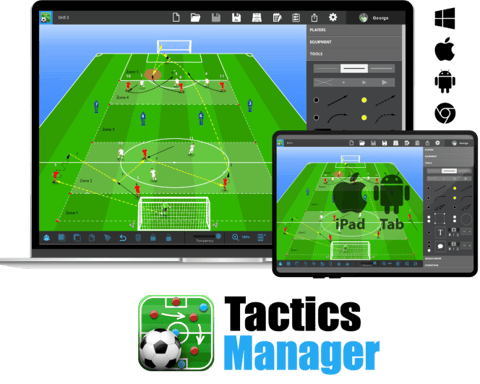Drill: 4v2 Transition Rondo with 4 Teams (U12 and Up)
Drill: 4v2 Transition Rondo with 4 Teams (U12 and Up)
ATTACK - DEFENSE TRANSITION DRILLSRONDOS
10/23/20241 min read

Drill: 4v2 Transition Rondo with 4 Teams (U12 and Up)
Organization:
Set up two 10x10 meter grids side by side.
Divide players into 4 teams of 2 (e.g., two blue teams and two red teams).
In each grid, play a 4v2 rondo, where one pair of defenders from the opposing color applies pressure while the other four players try to keep possession.
After a set time, or if the defenders regain possession, the ball transitions to the second grid, where the same teams switch roles.
Objective:
Possession Team: Maintain control in your grid and quickly adapt when possession is lost by transitioning to defense.
Defending Team: Work in pairs to press and win the ball. If successful, play it to the opposite grid to transition to offense.
Progressions:
Two-Touch Limit: Limit the possession team to two touches to speed up the game and enhance quick decision-making.
Reduce Space: Shrink the grids to increase the pressure on the players, demanding faster transitions and tighter control.
Alternate Defenders: Add a rotation where different pairs switch as defenders after each transition to involve more players.
Key Coaching Points:
Rapid Transition: Emphasize the shift in mindset from attack to defense immediately upon losing possession, and vice versa.
Compact Defending: Defenders should press with urgency and in tandem, using the limited space to force turnovers.
Spacing and Support: The possession team should use spacing, quick passes, and support angles to maintain control under pressure.
Decision-Making Under Pressure: Limiting touches and shrinking space challenges players to make quick, effective decisions.
Coaching Questions:
To the players:
"How quickly can you adjust your position when the ball transitions to the other grid?"
"Where should you position yourself to support your teammates in possession?"
"As a defender, how can you work with your teammate to force an error in possession?"
To the coach:
"Are players maintaining compact spacing and making smart passing choices?"
"Are defenders pressuring with the right timing and intensity to win the ball effectively?”
"Are the progression changes—touch limits or grid size—appropriately challenging the players?"






